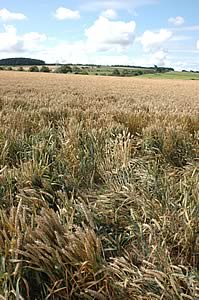 |
|||||||||
|
|||||||||||||||||||
|
|
Flexibility Vital in Late-Spring Weed Spraying 2010-03-25 Wheat growers across the country need to build as much flexibility into their weed control programmes as possible this season to cope with one of the latest springs in recent memory, not to mention the legacy of last autumn’s particularly poor control of problem weeds like brome.
This is the timely advice from Monsanto Crop Protection stewardship manager, Manda Sansom who runs the company’s technical agronomy hotline. Manda Sansom stresses that the key to handling this has to be maximum weed control flexibility based on herbicides with the longest spraying windows and broadest tank-mixing capabilities. “With so little time at your disposal, you’ll probably only be able to rely on one decent, relatively late weed hit this spring,” she advises. “So you’ll need to focus this carefully on the weeds posing the biggest threat while giving the best possible clear out of other species. “At the same time, you’ll need to choose products with a very wide tank-mixing ability so you have the greatest opportunity to combine them with other herbicides as well as fungicides and PGRs without spraying problems. “Maximum spraying flexibility will come from a herbicide like sulfosulfuron (Monitor) which can safely and reliably be used right up to flag leaf emergence at GS39 rather than only up to around GS33.
|
||||||||||||||||||

|
|
||||||||||||||||||
| home | agri-services | pedigree
pen | news | dairy | beef | machinery property | organisations | site map |
|||||||||||||||||||


